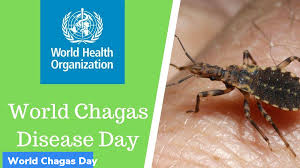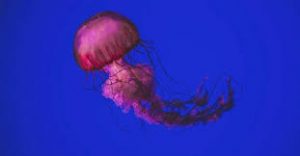Today’s Current Affairs: 16th April 2024 for UPSC IAS exams, State PSC exams, SSC CGL, State SSC, RRB, Railways, Banking Exam & IBPS, etc
Table of Contents
World Chagas Disease Day 2024:

The World Health Organization designated April 14 as World Chagas Disease Day to raise awareness of the disease and its impact on global health.
- The theme for 2024, ‘Tackling Chagas disease: detect early and care for life,’ emphasizes the importance of early detection and treatment to prevent the progression of the disease and reduce its burden on affected individuals and communities.
- Chagas disease, also known as American trypanosomiasis, is a parasitic infection caused by the protozoan Trypanosoma cruzi.
- It is primarily transmitted to humans through the feces of infected triatomine bugs, also known as “kissing bugs,” that typically bite humans on the face at night.
- The disease can also be transmitted through blood transfusions, organ transplantation, and from mother to child during pregnancy.
- Chagas disease has two phases: an acute phase and a chronic phase.
- The acute phase usually lasts for the first few weeks or months after infection and is often asymptomatic or causes mild symptoms such as fever, fatigue, body aches, and swelling at the site of infection.
- The infection progresses to the chronic phase, which can lead to serious and potentially life-threatening complications. Chronic Chagas disease can cause heart problems, including an enlarged heart, heart failure, and abnormal heart rhythms, as well as digestive issues such as megaoesophagus and megacolon.
Sustainable Hydrogel:

Researchers at the Indian Institute of Science (IISc) have developed a sustainable hydrogel to address the issue of microplastic pollution in water.
- Microplastics, posing significant threats to human health and the environment, can enter our bodies through water consumption.
- The three-layer polymer hydrogel, consisting of chitosan, polyvinyl alcohol, and polyaniline, forms an interpenetrating polymer network (IPN) architecture.
- Infused with nanoclusters of copper substitute polyoxometalate (Cu-POM), the hydrogel can bind and degrade microplastics under UV light irradiation.
- The team ensured efficient microplastic removal and degradation by tracking their adsorption and degradation using fluorescent dye.
- The hydrogel exhibited high efficiency, removing about 95% and 93% of two different microplastic types at near-neutral pH levels.
- Hydrogels are three-dimensional networks composed of hydrophobic polymers synthesized by crosslinking water-soluble polymers.
- Hydrogels can retain a large quantity of water within their network without disturbing their original structure.
- This imparts flexibility and swelling properties to the hydrogel structures.
Home Voting : ECI

The Election Commission of India (ECI) has introduced a ground-breaking initiative for the 2024 Lok Sabha elections, providing the option of home voting for elderly citizens above 85 years of age and Persons with Disabilities (PwDs) with a 40% benchmark disability.
- This initiative aims to enhance inclusivity and accessibility in the electoral process.
- Additional steps taken by the Election Commission (EC) to promote inclusive voting include:
- Abolishing Form-M requirement for Kashmiri migrants residing in Jammu and Udhampur, simplifying the voting process for them.
- Implementing Systematic Voter’s Education and Electoral Participation (SVEEP) to engage Persons with Disabilities (PwDs) and educate their friends, families, and polling officials.
- Introducing the proposed Multi-Constituency Remote Electronic Voting Machine (RVM), enabling migrant voters to vote from their current place of residence.
- Allowing voting by postal ballot for special voters, service voters (including members of the armed forces, police forces serving outside their states, and government employees serving outside India), voters on election duty, and electors subjected to preventive detention.
- Facilitating proxy voting, allowing registered electors, particularly service voters, to delegate their voting rights to a representative of their choice.
Venomous Jellyfish : Bloom Across The Visakhapatnam Coast

A bloom of venomous jellyfish was reported across the Visakhapatnam coast.
- The species, Pelagia noctiluca, also known as the mauve stinger or purple-striped jellyfish, has a painful sting and causes different degrees of illnesses such as diarrhoea, extreme pain, vomiting and anaphylactic shock and can be life-threatening.
- It is a purple-coloured translucent species resembling a floating balloon.
- It is found worldwide in tropical and warm-temperature seas.
- Unlike other jellyfish species, it has stingers not just on the tentacles, but on the bell too.
- These are bioluminescent, having an ability to produce light in the dark.
- A jellyfish bloom is when the population of the species increases dramatically within a short period of time, usually due to a higher reproduction rate. It occurs frequently as a result of rising ocean temperatures.
- These have in the past been known to have caused massive damage to the fishing industry and impacted tourism.
Artificial Reefs:

India’s second-ever installation of artificial reefs (after Pondicherry) to boost marine life is being deployed near Worli Koliwada, Mumbai.
- 210 reef units made from recycled concrete and steel are installed 500 meters offshore, and it will take 3 months to show initial signs of a thriving ecosystem.
- Artificial Reefs are structures built by humans through biorock technology and placed on the seabed in freshwater or saltwater environments.
- Biorock technology was invented by Wolf Hilbertz. In this technology, a low electrical current is passed through the water using electrodes placed near a steel structure.
- This current acts like a magnet, attracting dissolved minerals, particularly calcium and carbonate ions, forming a calcium carbonate (CaCO3) layer similar to natural coral reefs.
- These reefs offer crucial hard surfaces to which algae, barnacles, corals, and oysters can firmly attach themselves.
- These reefs will create habitats for fish, absorb carbon dioxide, and benefit local fishing communities.
India Gains Sittwe Port Access:

The Ministry of External Affairs (MEA) has approved a proposal for India Ports Global Ltd (IPGL) to take over the operations of the entire Sittwe port located on the Kaladan River, Myanmar. It will be India’s 2nd overseas port after Chabahar Port.
- IPGL is a company 100% owned by the Ministry of Ports, Shipping and Waterways.
- The Sittwe Port, located in the Rakhine State of Myanmar, is a crucial component of the Kaladan multi-modal transit transport project.
- The deep-water port offers a significant connectivity advantage for cargo to reach from Vizag and Kolkata to the Northeastern states, bypassing Bangladesh.
- It will also reduce dependency on the Siliguri Corridor (or the chicken’s neck) squeezed between Bhutan and Bangladesh.
- India’s operational control over these 2 overseas ports, Chabahar and Sittwe, will strengthen India’s maritime influence to counter China’s String of Pearls policy with ports like Hambantota in Sri Lanka, Djibouti in Africa, etc.
Asia Development Outlook Report 2024:

The Asian Development Bank (ADB) recently released the Asia Development Outlook Report in April 2024 and revised India’s Gross Domestic Product (GDP) growth forecast for the fiscal year (FY) 2024 and FY 2025, citing various factors contributing to this optimistic outlook.
Key Highlights of Asia Development Outlook Report 2024:
- Despite uncertain external prospects, Asia is projected to maintain resilient growth in the coming years.
- Factors such as the conclusion of interest rate hiking cycles in most economies and a sustained recovery in goods exports, particularly driven by improving semiconductor demand, contribute to the region’s broadly positive outlook.
- Asia’s GDP growth forecast for 2024 stands at 4.9%, with a similar projection maintained for 2025.
- This steady growth trajectory reflects the region’s ability to navigate external challenges and sustain economic momentum.
- Inflation in Asia is expected to moderate, with a forecast of 3.2% for 2024 and a further decrease to 3.0% in 2025.
- This trend indicates a relatively stable pricing environment, which can support consumer confidence and spending
- India’s investment-driven growth is highlighted as a significant factor in positioning the country as a major economic engine within Asia.
- India’s GDP growth to reach 7% in FY 2024 and 7.2% in FY 2025, up from the previous forecast of 6.7% for FY 2024.
Higher capital expenditure on infrastructure development by central and state governments is a major driver of growth. - Private corporate investment is expected to rise, supported by stable interest rates and improved consumer confidence.
- The service sector’s performance, including financial, real estate, and professional services, is contributing significantly to economic expansion.
- Growth Momentum in FY 2025: FY 2025 is expected to witness increased momentum, driven by improved goods exports, enhanced manufacturing productivity, and higher agricultural output.
- The forecast reflects a positive outlook for India’s economy, buoyed by its strong domestic demand and supportive policies.
- Despite the positive forecast, unanticipated global shocks like supply disruptions in crude oil markets and weather-related impacts on agriculture remain key risks.
- The current account deficit is projected to widen moderately due to rising imports to meet domestic demand.
Easementary Right : Supreme Court

The Supreme Court, in a dispute of easementary rights over a road, reiterated that the power of attorney holder can only depose about the facts within his personal knowledge.
- Easementary Right concept of easement has been defined under The Indian Easements Act, 1882.
- According to it, an easementary right is a right possessed by the owner or occupier of the land on some other land, not his own, the purpose of which is to provide the beneficial enjoyment of the land.
- This right is granted because, without the existence of this right an occupier or owner cannot fully enjoy his own property.
- It includes the right to door continue to do something or to prevent or to continue to prevent something in connection with or in respect of some other land, which is not his own, for the enjoyment of his own land.
- The word ‘land’ refers to everything permanently attached to the earth and the word ‘beneficial enjoyment’ denotes convenience, advantage or any amenity or any necessity.
- The owner or occupier referred to in the provision is known as the Dominant Owner and the land for the benefit of which the easementary right exists is called Dominant Heritage.
- Whereas the owner upon whose land the liability is imposed is known as the Serviant Owner and the land on which such a liability is imposed to do or prevent something is known as the Servient Heritage.
Hubble Tension:

In a study published recently, scientists from Germany and the U.K. led a radical explanation for the Hubble tension.
- Hubble Tension refers to a discrepancy between the measurements of the rate of expansion of the universe, known as the Hubble constant.
- The Hubble constant, denoted as H0, describes the rate at which galaxies are moving away from each other due to the expansion of the universe.
- If a researcher wants to estimate the Hubble constant, they have two main avenues. These are the cosmic distance ladder and the cosmic microwave background (CMB).
- Thus, these measurements have yielded slightly different values for the Hubble constant. This discrepancy is known as the Hubble tension.
- The significance of the Hubble tension is that it could potentially indicate unknown physics or systematic errors in the measurements.
- Resolving the tension is crucial for refining our understanding of the universe’s expansion and its underlying physics.
- Cosmic microwave background (CMB) is a sea of photons, the particles of light, present throughout the universe. They are left over from the Big Bang, its afterglow. Scientists have measured temperature changes in the CMB and studied its large-scale properties using complicated trigonometry.
- Cosmic distance ladder is used to measure the distance to objects that are close, further away, or very far away from the earth. One object in particular is the Cepheid variable star. The Cepheid variables have a unique feature: their brightness varies in a predictable way over time.
Operation Meghdoot:

The Indian Army recently commemorated 40 years since ‘Operation Meghdoot’ began for securing the Siachen Glacier.
- Operation Meghdoot was the code-name for the Indian Armed Forces operation to capture the Siachen Glacier, a strategically crucial region dominating Northern Ladakh.
- Siachen has been a bone of contention between India and Pakistan ever since the Karachi Agreement of 1949, when the area was left undivided due to the hostile terrain and extremely rough weather.
- Operation Meghdoot was India’s bold military response to what New Delhi calls Pakistan’s “cartographic aggression” in the uncharted territory of Ladakh, north of map reference NJ9842, where New Delhi and Islamabad had agreed the Line of Control (LoC) ran up to.
- The primary objective behind this operation was to pre-empt the seizure of Sia La and Bilafond La passes by the Pakistan Army.
- Launched on April 13, 1984, this military operation was unique as the first assault launched on the world’s highest battlefield.
- It is distinguished by being one of the greatest examples of seamless coordination and synergy between the Indian Army and the Air Force.
- The military action resulted in Indian troops gaining control of the entire Siachen Glacier.




